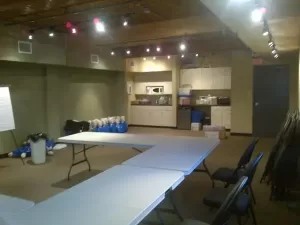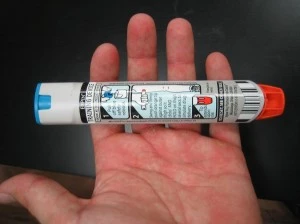As Manitoba approved training providers, Winnipeg First Aid, is the largest first aid and CPR course provider in Manitoba. They have been providing courses since 2011 and believe in providing great value and quality in all programs offered. Participants can select from a wide range of courses, re-certifications and can request private courses for groups of almost any size. Registration can be completed via several different methods including on-line, via telephone, or the most popular method, on-line. If you have any questions or concerns about programs they can be contacted using the information provided below. To register for first aid training classes in Winnipeg complete the registration form on the bottom of the page.
Easy Registration

Registration for instructional classes by Winnipeg First Aid is very easy. A complete list of offered classes can found on the Winnipeg First Aid website.
After you have chosen a training course, you can use the on-line application form below to complete your enrolment. Telephone calls, e-mails, and walk-ins at the training centre during business hours are also highly encouraged.
Contact Information
This Manitoba approved provider can be contacted using the following details:
- Website: http://firstaidwinnipeg.ca
- Email Address: info@firstaidwinnipeg.ca
- Telephone Number: 204-272-8720
- Main Training Address: 222 Osborne Street, Unit 20, Winnipeg, Manitoba, R3L 1Z3
Manitoba Approved Certification
Trainees who are able to complete their enrolled courses are awarded a Manitoba approved training certificate, valid for three years throughout Winnipeg. Re-certification classes are also available for individuals that want to renew awards. This provider strongly encourages its participants to ensure that they meet the required prerequisites prior to registering for a re-cert course.
Popular Classes
When it comes to comprehensive first aid, CPR and AED courses three classes are the most popular. Standard first aid is the most popular two day course that meets Manitoba workplace requirements. Emergency first aid, commonly referred to as “basic first aid” is a popular one day course. Childcare first aid is similar to standard first aid but requires participants to learn additional topics related to shaking baby syndrome.
CPR “Only” Courses
Participants that want to only learn CPR and basic life support techniques can enrol in the following 6 courses.
- CPR level “A” – 4 hour course
- CPR level “C” – 5 hour course
- CPR level “HCP” – 6 hour course
- Basic Life Support (BLS) – 4 hour course
- Advanced Life Support (ACLS) – 16 hour course
To register for any of the above mentioned courses use the contact information provided above.
What Will I Learn in a First Aid Course?

First aid classes are easily the most popular classes offered by Winnipeg First Aid, being able to cover various first aid skills sets and emergency situations requiring them. The following topics are covered in detail in a standard first aid course: bandaging, splinting, allergic reactions, heart attacks, angina, stroke, dislocations, 5 rights of medication, CPR on adults, children and infants, barrier devices, personal protective equipment, scene assessments, casualty management, environmental emergencies, asthma and choking hazards. These topics are covered using a variety of teaching styles as well as hands-on simulations.
Private Classes
Private classes are offered to big groups of trainees or companies. Large groups usually request separate training classes on a particular schedule.
Training Course Rates
Training courses are offered at the cheapest rates in the area. No other training service provider offers courses at lower rates than Winnipeg First Aid. Enrolment rates are inclusive of certificates, and St Mark James registration fees. Manuals and equipment are also included in the initial fees so trainees don’t have to worry about additional expenses.
Full refunds are given to trainees who drop out as long as a 72-hour notice is given.
Did You Know?
Wounds
A wound is a break in the surface of the skin which may or may not bleed. Bleeding happens when the injury extends to the capillary arteries, causing blood loss (amount depending on the size of the wound). If the wound is small and shallow, the first aider’s goal is to prevent infection. With deep wounds that bleed profusely, the goal of the first aider is to control bleeding and minimize shock that can occur from it. Be aware that severe bruising after a traumatic accident can signify internal bleeding, especially on the abdomen.
